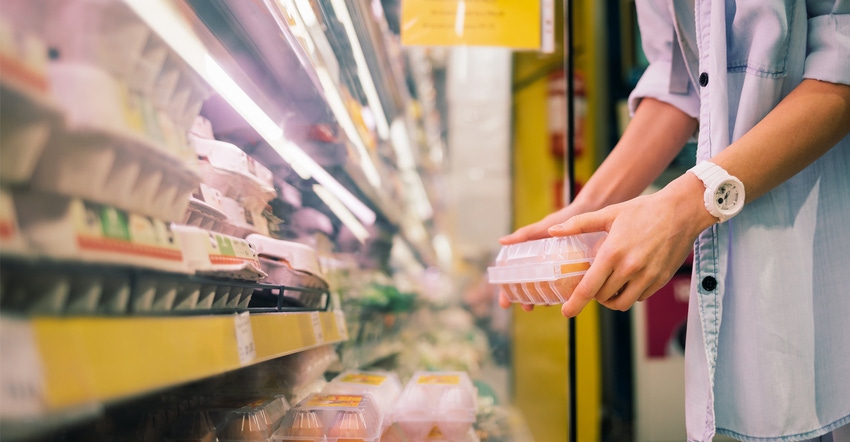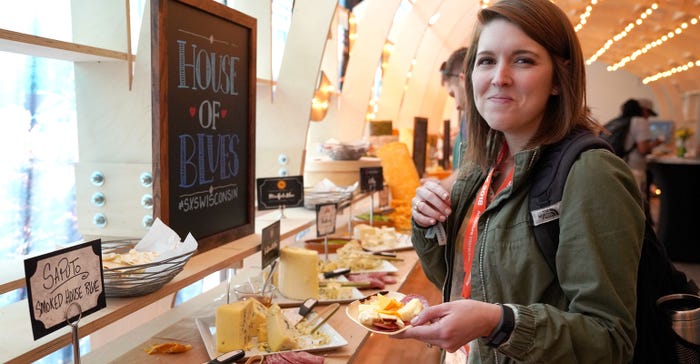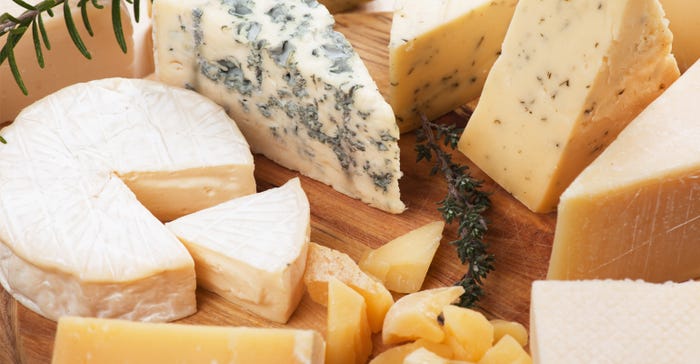
“In our lifetimes, there is nothing that has disrupted the entire food chain as much as the pandemic,” said Charlie Arnot, CEO of the Center for Food Integrity and owner and manager of Look East. Arnot recently spoke on a Professional Dairy Producers’ Dairy Signal webinar.
From the very early days of the pandemic when everyone was hoarding paper products, to the challenges seen in vegetable, meat and other processing plants ravaged by COVID-19, to online shopping, Arnot pointed out that we are seeing a complete change in the food chain.
“We’ve turned the food system upside down,” he said. “I was on the phone with somebody from Sysco, the nation’s largest restaurant distribution company, and they shared that they lost 70% of their business in just five days when COVID hit. Current estimates are that 4 in 10 restaurants that closed will not reopen.”

Arnot said that since the country first went into lockdown last March, there has been a fundamental shift in grocery shopping.
“Kroger sits on our board of directors, and they said they hired 100,000 digital associates to manage ‘click and pick’ for people who shop online and then drive to the stores and pick up their groceries curbside so they don’t have to go in the store and be exposed to the virus,” he explained.
What was expected to take five years to change in grocery shopping behavior and patterns happened in about five months, he said.
“Between ‘click and pick’ and direct consumer shopping online, we are fundamentally seeing a complete change in how people are buying groceries,” Arnot said.
Fewer product offerings
The pandemic has brought about additional challenges related to grocery shopping.
“Grocery stores are beginning to condense the number of items they carry so they have fewer items out of stock,” Arnot said. “Before the pandemic, in the soda aisle you would see Coke, Diet Coke, Cherry Coke, Lime Coke, decaffeinated Coke, decaffeinated Diet Coke, decaffeinated Cherry Coke and decaffeinated Lime Coke. Now you just see Coke, Diet Coke, decaffeinated Coke and decaffeinated Diet Coke, and that’s it. They did that at the start of the pandemic to reduce the number of products they would run out of, and what they have discovered is they can be more profitable by offering fewer products. So, we’re going to continue to see fewer product offerings.”
What does that mean for the dairy industry?
“The dairy case needs to look to innovate, and they can innovate with fluid milk,” Arnot said. “There’s been some exciting innovations like Fairlife, which is the most visible one, but there are others. As retailers continue to condense the number of products they offer, the competition for shelf space is going to continue to increase. It’s going to require more creative innovation.”

Arnot said people are struggling economically due to the pandemic, but a large number of people still have their jobs and are continuing to do well.
“The ones who still have their jobs may be working from home and spending less money on travel, restaurants and entertainment. So, economically they are doing well,” he said. “There are also those on the lower end of the economic spectrum in the hospitality and service sectors who are struggling and are just trying to get by. So, we are seeing a desire for premium products and value products.
“People are looking for high-end products like premium cheese and ice cream because they want to celebrate a little and reward themselves, and they are seeking relief from these dark winter days. We’re seeing the whole value segment because there are a lot of struggling people there. So, there are opportunities at both ends of the spectrum.”
Eating healthy
Arnot said a lot of people of all ages, but especially those in their 20s and 30s, are looking for products that can protect their health.
“They are asking, ‘What can I eat to maximize my nutrition?” he said. “There are also consumers looking for products that have a positive impact on the planet.”
Arnot said dairy farmers need to share how dairy contributes to a better diet and a healthier environment.
“Consumer focus is shifting from what’s in the environment that might harm the planet to what’s in the environment that might harm me or my family. A lot of that has to do with the pandemic,” he explained. “Consumers are looking at the situation, and they’re saying ‘I knew nothing about coronavirus, and it’s completely turning my world upside down. It’s affecting my work; it put my family at risk; I may know friends and family who got sick or I may have friends and family who died as a result of COVID, and I’m really anxious about that.’”
While there is a lot about COVID-19 that consumers can’t control, one of the things people are concerned about that they can control is what they eat and drink, Arnot said.
“They are looking at what’s in their food, like pesticides and antibiotics,” he said. “Consumers are looking at pesticide residue in their milk, meat and eggs.”

Some consumers are also seeking out meat and milk alternatives. “Dairy producers shouldn’t rail against the alternatives,” Arnot warns. “Instead, they should help consumers understand why dairy is better for them and the planet — that’s the smart option. None of the folks I’ve talked to in the food system believe alternatives are going to replace the real thing. But they are going to eat market share and be jockeying for shelf space. So, if we want to be competitive in that conversation, we have to give consumers permission to believe consuming dairy products is better for them and better for the planet.”
Before the pandemic, a majority of meals were eaten away from home. Arnot believes after the pandemic ends, consumers will continue to cook at home.
“People are a little tired of it now, so there is kitchen fatigue,” Arnot said. “But they are learning to cook. They have bought Instant Pots and air fryers. When they can start going to restaurants again, they will do that, but they will continue to cook most of their meals at home.”
Read more about:
Covid 19About the Author(s)
You May Also Like






